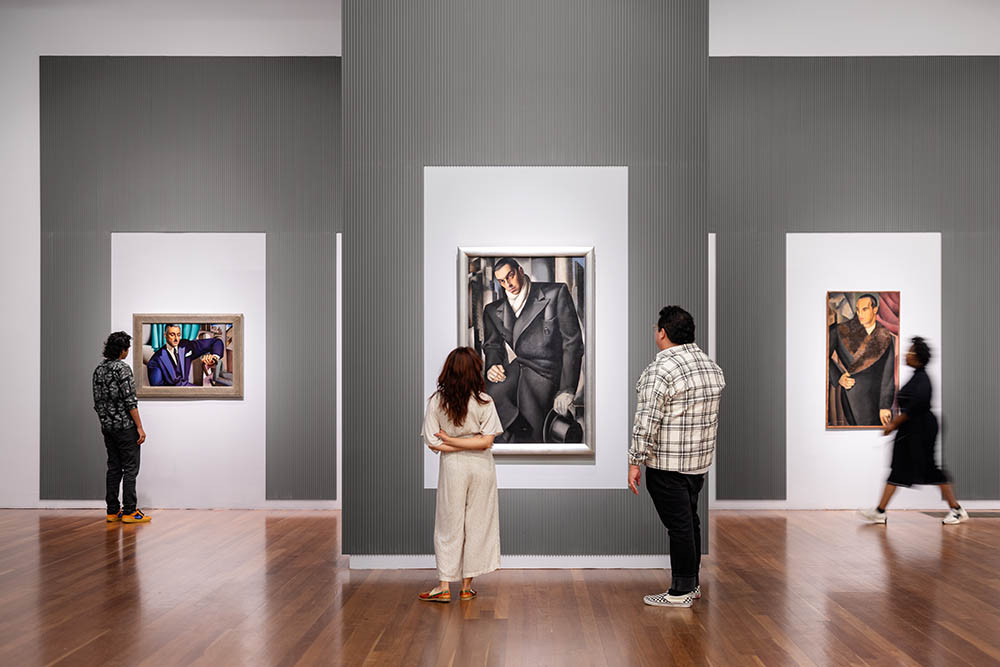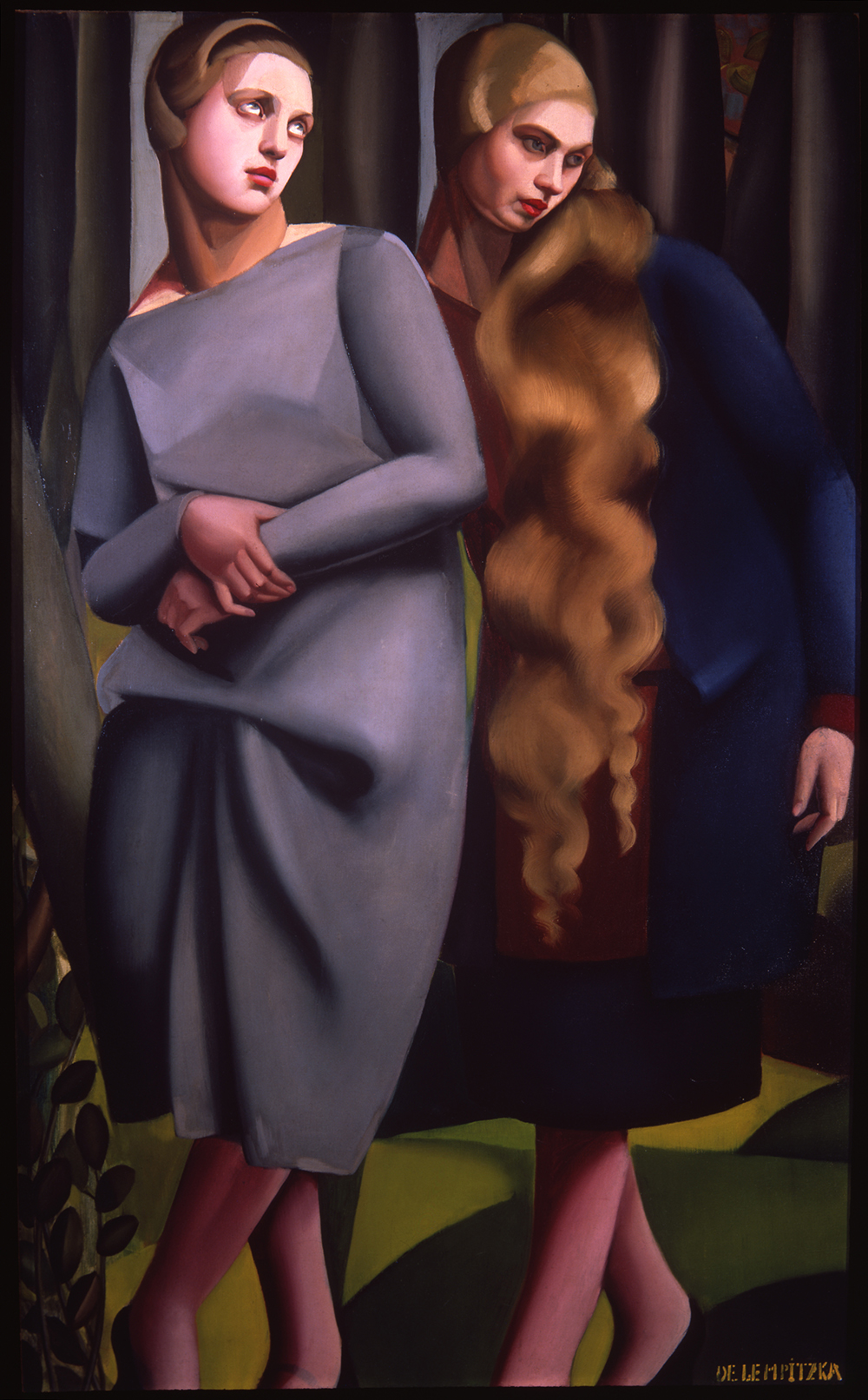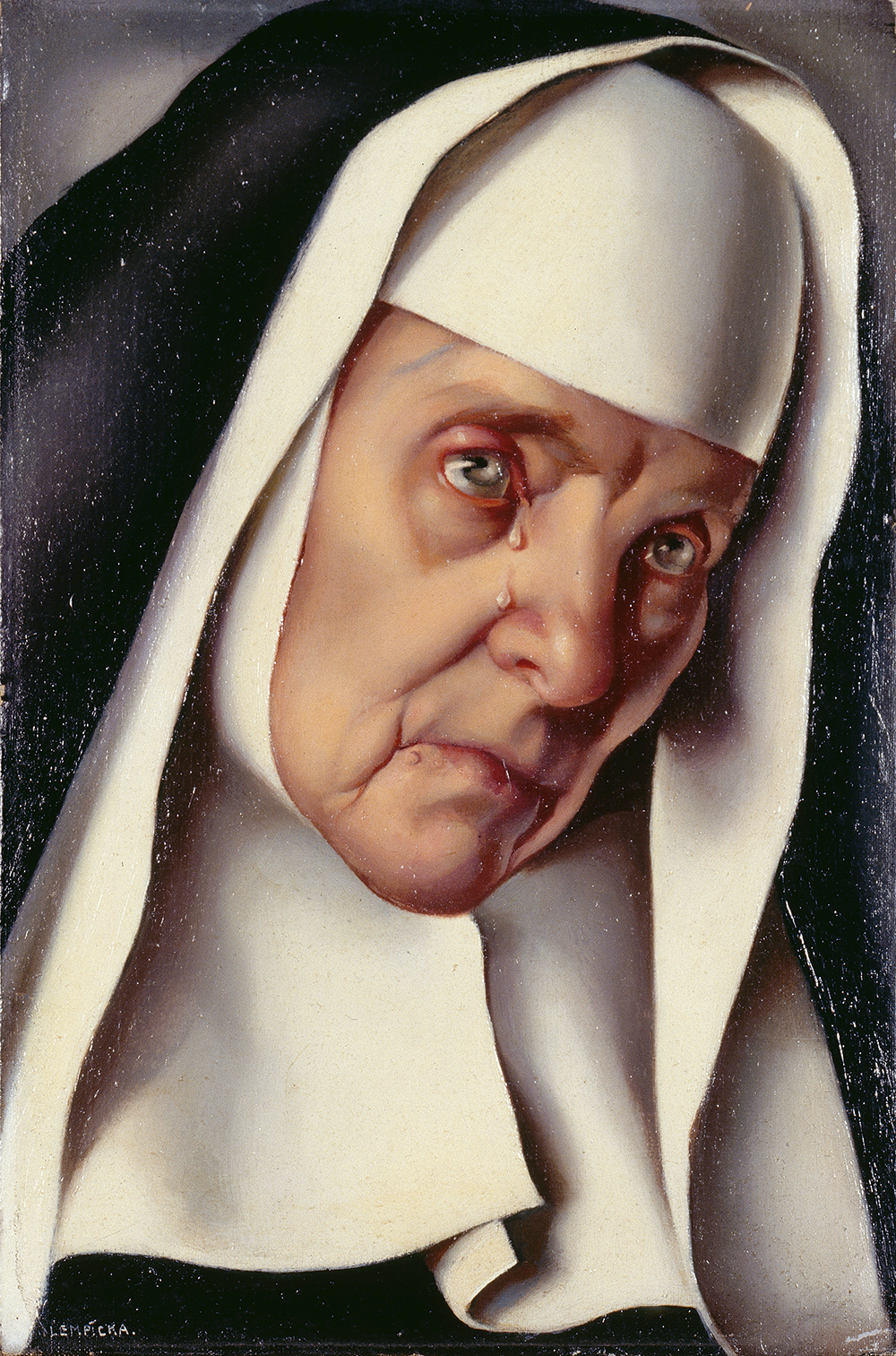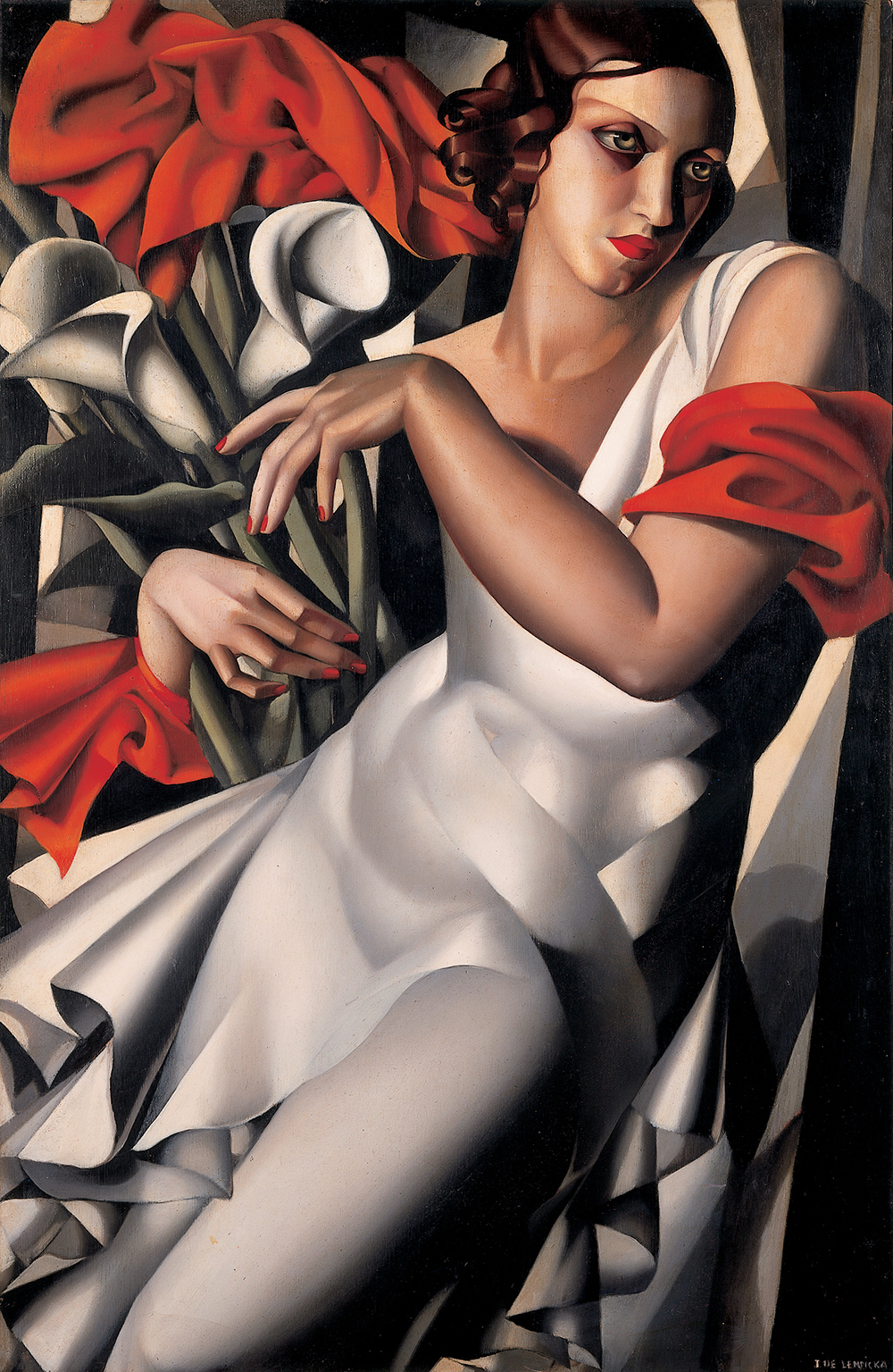Tamara de Lempicka—the first retrospective exhibition in the U.S. dedicated to the artist’s full oeuvre—reveals a new perspective on her life and design practice. It’s easy to see how her paintings, combining a classical figural style with the modern energy of international avant-garde, have cemented Lempicka as one of Art Deco’s defining painters, with an enduring influence on today’s pop culture landscape. Come to San Francisco to see this landmark exhibition!


About Tamara de Lempicka
Born Tamara Rosa Hurwitz (1894-1980) to a Polish family of Jewish descent, she grew up in Saint Petersburg. There she met her first husband, Tadeusz Łempicki, from whom she took the feminine declension Lempicka and altered it to the more noble “de Lempicka.” Following the October Revolution in 1917, they fled to Paris. There she signed her early works under the masculinized name “Łempitzky.” Many believed her to be a man and for a time that suited her goal of being recognized as an important artist. Lempicka created a public image as flawless as the glossy surfaces of her paintings and became the toast of the town. de Lempicka’s style was singular: “Among a hundred paintings, you could always recognize mine,” she said.
Lempicka and Tadeusz Łempicki divorced in 1929, and in 1934 she married Baron Raoul Kuffner de Dioszegh. They left Europe for the United States just before the start of World War II. The artist, now Baroness Kuffner, became a favorite of Hollywood celebrities—yet her work fell out of favor until the 1970s, when the ever-resilient de Lempicka was rediscovered as a leading figure of Art Deco. Today, she stands out as one of the most receptive, gifted, and technically accomplished painters of her generation.
About the exhibition
Tamara de Lempicka unfolds chronologically in four major chapters that mark the stages in the artist’s life through her changing identity: Tamara Rosa Hurwitz, Monsieur Łempitzky, Tamara de Lempicka, and Baroness Kuffner. The different sections of the exhibition present the evolution of her artistic style and give the viewer an amazing opportunity to realize the most prevalent themes of her work.

Tamara Rosa Hurwitz
Shortly after marrying Tadeusz Łempicki at the age of 22, they left for Paris. Here, Lempicka enrolled at free academies in the artistic community of Montparnasse, where she took classes from André Lhote, a French painter
whose tempered interpretation of Cubism and emphasis on figurative drawing were highly influential to her developing style. Her first works were still lifes and portraits of her friends, as she honed her skills and developed an appreciation for sensual figurative forms.
Monsieur Łempitsky
In the early 1920s, when Lempicka first exhibited at the Parisian salons, she signed her works using the masculine version of her surname Łempitzky, purposefully blurring her gender identity. The salons were open to both men and women, but the juries, critics, and buyers who could ensure an artist’s success were predominantly men. During her first solo exhibition in 1925, she presented a gallery of modern aristocracy in her distinctive portraiture style.



![[TAMARA DE LEMPICKA]](https://artbusinessnews.com/wp-content/uploads/2024/10/Ext_304132_20240409.jpg)
Tamara de Lempicka
By 1930, Lempicka had cemented her cool, high-gloss pictorial style. Her female portraits, in particular, reflected the optimism of an era when women began enjoying greater social and economic access and prominence.
Baroness Kuffner
In 1939, under the impending threat of Nazi invasion, Lempicka and her second husband, Baron Raoul Kuffner, left Europe for the U.S. Living in Los
Angeles and New York, and ultimately joining her daughter, Kizette, in Houston, she strove for an artistic comeback as Baroness Kuffner. The American press nicknamed her the “baroness with a brush.” Lempicka shifted from glamorous portraits to religious paintings and humble still lifes inspired by the Old Masters. Mixed reviews of her series of solo exhibitions lead her to withdraw from pursuing her painting career.
Be sure to see…
Within the galleries of the exhibition, you’ll find special collections significant to Tamara de Lempicka’s story, including:



Kizette de Lempicka, A Model Daughter
Marie-Christine “Kizette” de Lempicka was born in Saint Petersburg in 1916, a few months after Tamara married Tadeusz. Lizette served as a model for her mother and garnered Lempicka’s first critical notice. They had a strained relationship given Lempicka’s desire for an independent lifestyle. Lizette remained in her mother’s life and was responsible for caring not only for her mother but also for her mother’s legacy.

Ira Perrot: Poet, Muse, Lover
Married to men and open about her bisexuality, Lempicka enjoyed a greater degree of freedom in the period between the World Wars. The poet Ira Perrot is the subject of many of Lempicka’s paintings, drawings, and poems during this time.

Nudes: Tradition and Transgression
Traditionally a male painter’s domain created for the pleasure of other men, female nudes were a genre where Lempicka could garner recognition from critics and clientele alike. Lempicka’s nudes exude sexuality in their authentic depiction of women’s bodies in realistic settings.
About the exhibition
Where: Legion of Honor (100 34th Ave., San Francisco, CA 94121)
When: Now through Feb. 9, 2025
Hours: 9:30 am-5:15 pm, Tuesday through Sunday; Closed on Mondays
Tickets: $20 for adults, $17 for seniors (65+), $11 for students (w/ valid ID), Free for youth (17 and under) and Legion of Honor members
Tamara de Lempicka is the first scholarly museum retrospective of the artist’s work in the U.S., exploring Lempicka’s artistic influences and revealing the process behind works that have become synonymous with Art Deco.
After its presentation at the de Young, the exhibition will travel to Houston and be on display at the Museum of Fine Arts, Houston, March 9 through May 26, 2025.
PRO TIP: Skip the line and book your tickets online https://www.famsf.org/visit/de-young-tickets-hours


1 Comments
Will this exhibit ever been shown on the east coast?